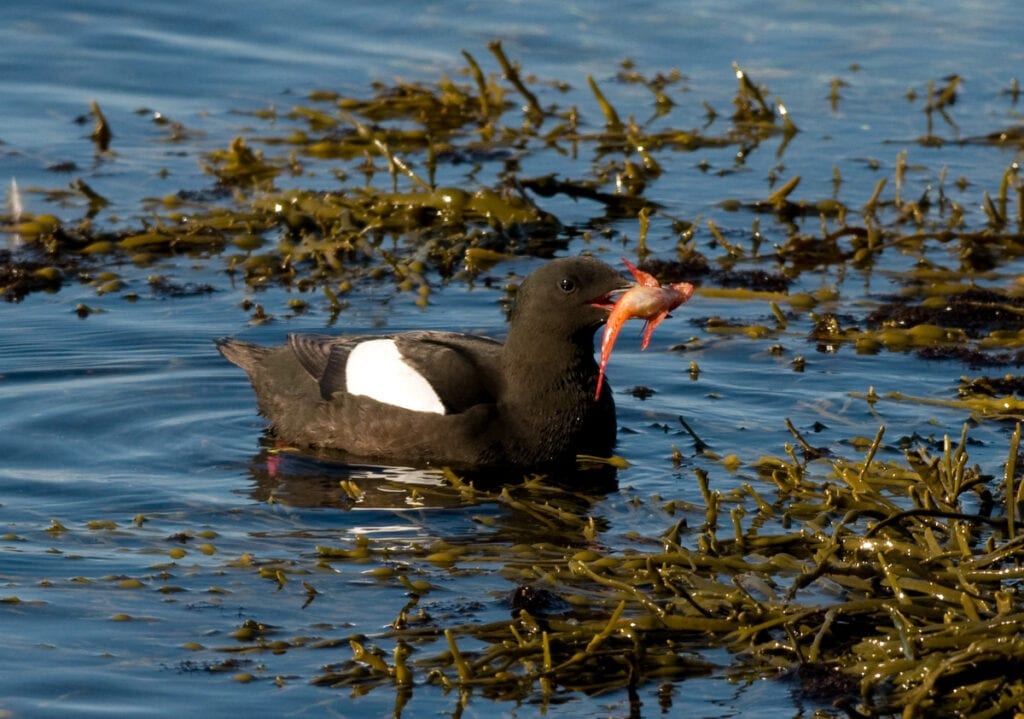The Black guillemot – an opportunist with a taste for fish and crustaceans
In order to determine what prey is important for Black guillemots (Cepphus grylle) in North Norway, researchers have studied stomach contents of Black guillemots caught as bycatch in gillnets in two areas in Troms and Finnmark. The stomach analyses confirm the opportunistic eating habits of the Black guillemot, and point towards fish and crustaceans as preferred prey.
Seabirds live in and off the ocean, and so they are good and useful indicators of changes in the marine environment. Seabird diet data can give early warnings about variations in fish stocks and oceanographic conditions, and studying diet is therefore an important part of the work within SEAPOP. However, investigations of this kind are demanding, and the biggest challenge is to obtain representative data in a way that is gentle for the birds. Researchers have now utilized birds taken as bycatch in fisheries in order to study the diet of Black guillemots. Breeding widely dispersed and sheltered, this species is little studied, but we know that it is declining in numbers in Norway. The researchers studied stomach contents of adult and immature Black guillemots that had drowned in Lumpfish (Cyclopterus lumpus) gillnets in two separate areas in Troms and Finnmark before and in the early phase of the breeding season.
Read the article:
Of the birds whose stomachs contained food, 90% percent contained crustaceans, with squat lobster being most common. One fourth of the guillemots had eaten Rock Gunnel, and about one fifth of the stomachs contained sculpins. No remains of soft-bodied prey were found. The relatively large amount of squat lobster might be explained by the fact that these crustaceans are easier to detect and catch when they come out at night during the light summer months in North Norway than further south along the coast. Moreover, it has also been reported that squat lobsters are abundant in North-Norway as a result of the heavy grazing on the kelp forest by sea urchins in the recent years.
The study shows that Black guillemots in North Norway, like many other seabirds, have a generally opportunistic feeding behavior outside the breeding season, and that there is little or no variation in diet between sexes or between different age groups.
Contact person: Signe Christensen-Dalsgaard, NINA
